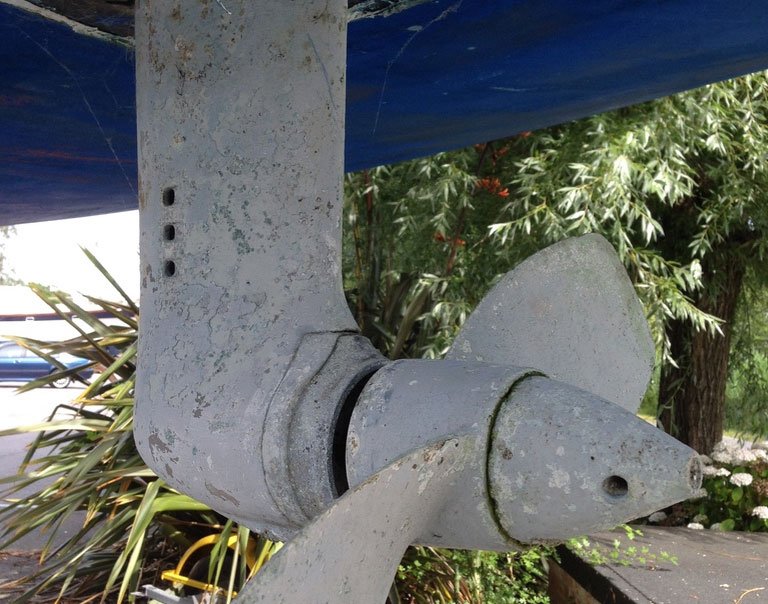There are less maintenance tasks to carry out on a saildrive transmission than on a traditional inboard shaft drive system with its associated stern gear. For example, you don’t have to worry about engine alignment, cutless bearings and stern glands. I owned a boat for seven years that had a Volvo Penta saildrive transmission system and this caused no problems during my ownership. The same applies to Yanmar saildrive systems.
However, there are a few critical things that require maintenance. These are as recommended in detail by the engine manufacturers and should be adhered to.
Corrosion
- Drive leg housings are made from aluminium and they must therefore be well protected from corrosion, requiring a special copper-free antifouling paint, plus undercoats. The housings also need dedicated sacrificial zinc anodes to prevent them from galvanic corrosion.
- Carefully inspect the drive leg for any damage to the paintwork. Any exposed aluminium will quickly corrode in salt water. Look for any white corrosion beginning to form on places where paint may have been chipped off. If any such damage is found it will need to be ground back before the unit becomes seriously damaged.
- Anodes are designed to protect saildrives from electric currents generated while in sea water.
- The electrical system of the engine will need to be an isolated system and not one which is grounded to the battery negative.
- When a non-aluminium propeller is fitted, additional anodes are required.
Oil change
- Regular checks of saildrive transmission oil are important. Any signs of milky coloured oil indicate water has found its way into the system. This could occur because of a shaft seal failure or defective drain plug seal.
- Manufacturers usually recommend that the transmission oil is changed annually, which can only be done ashore by draining the oil from the base of the leg. On some systems the oil can be removed using a hand pump operated from the engine bay. In order for the oil to drain completely, remove the filler cap on top to allow air in.
- Always use the manufacturer’s recommend oil and be careful not to overfill the system.
- Be aware that some manufacturers recommend a torque setting for the oil drain plug and also advise that the seal is replaced regularly, because if there is the smallest crack in the rubber seal it will leak.
Rubber seal
- The saildrive leg passes through a thick rubber seal that attaches to the base of the hull. Yanmar sail drives differ from Volvo Penta so it is worth checking with the manufacturer’s recommendations. Volvo recommending replacing seals after 7 years while Yanmar recommend replacing their sail drive seals every two years, which is quite a difference. Replacing sail drive seals is a fairly major job which has to be done ashore and entails lifting the engine. The part itself is pricey but significant additional cost needs to be factored in for the engine lift and labour involved.








